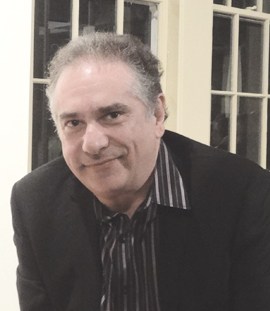
Architect Allison Reeves has been practicing her trade for the last 25 years – working on a range of residential, restaurants and small-scale retail designs to large-scale cultural and educational projects. Her goal has always been to provide modern design with a focus on the innovative use of materials and research-based solutions. Reeves thought about going out on her own about six years ago, leaving a big firm to work with well-known Japanese architect Shigeru Ban, because she wanted to get experience with high-end residential work. Since then she’s been splitting her time between working for Ban on a condominium building in Tribeca and doing her own residential work. This month she’s planning to shift gears and focus on her own firm, arDesign, full-time.
Reeves spoke with us and discussed her approach to designing; the biggest highlight of her career thus far; and some misconceptions about architects.
RHSR: What’s your personal style/aesthetic when designing?
AR: I’m a modernist, but not I’m not a stark modernist or dogmatic about style. My work tends to be fairly organic and I use a lot of warm natural materials, and I like to get inspiration from my clients, so each project is different.
RHSR: What’s the style people are looking for nowadays?
AR: Residential clients in NYC seem to be looking for either very modern, or an updated and streamlined classic style that blends traditional elements with modern touches.
RHSR: Who are your inspirations?
AR: The architects that inspire me the most are ones who use innovative materials in a spare, straightforward way so that the materials really shine. Ludwig Mies van der Rohe, Louis Kahn, Eero Saarinen, Le Corbusier, and Charles and Ray Eames come to mind as foundational influences. Architects practicing today that I admire include Tadao Ando, Herzog & deMeuron, SHoP Architects, Annabelle Selldorf and Jeanne Gang.
RHSR: What’s been your biggest career accomplishment that you’re most proud of?
AR: I did a full gut renovation on a townhouse [from the 1890’s] in the neighborhood [Red Hook] a few years ago that really jump-started my own firm. The project was published in Dwell magazine and a profile of it was written on Brownstoner.
RHSR: What’s a common misconception you think people have about architecture?
AR: I think most people don’t realize that architects do more than just “design.” We lead the team on most projects so we have an incredibly broad knowledge so that we can talk to the consultants and guide the project. We need to know a lot about structural engineering, mechanicals, plumbing, electrical, site work, lighting, sustainability, zoning and building codes, just to name a few. I think another misconception is that architects are expensive. Architects can work within any budget, and we are skilled at making sure the client gets the best product for the best price, and we can help avoid costly mistakes.
*Note: This interview has been condensed and edited for publication.
Photo from Reeves’ website
Author
-

George Fiala has worked in radio, newspapers and direct marketing his whole life, except for when he was a vendor at Shea Stadium, pizza and cheesesteak maker in Lancaster, PA, and an occasional comic book dealer. He studied English and drinking in college, international relations at the New School, and in his spare time plays drums and fixes pinball machines.
View all posts
George Fiala has worked in radio, newspapers and direct marketing his whole life, except for when he was a vendor at Shea Stadium, pizza and cheesesteak maker in Lancaster, PA, and an occasional comic book dealer. He studied English and drinking in college, international relations at the New School, and in his spare time plays drums and fixes pinball machines.










